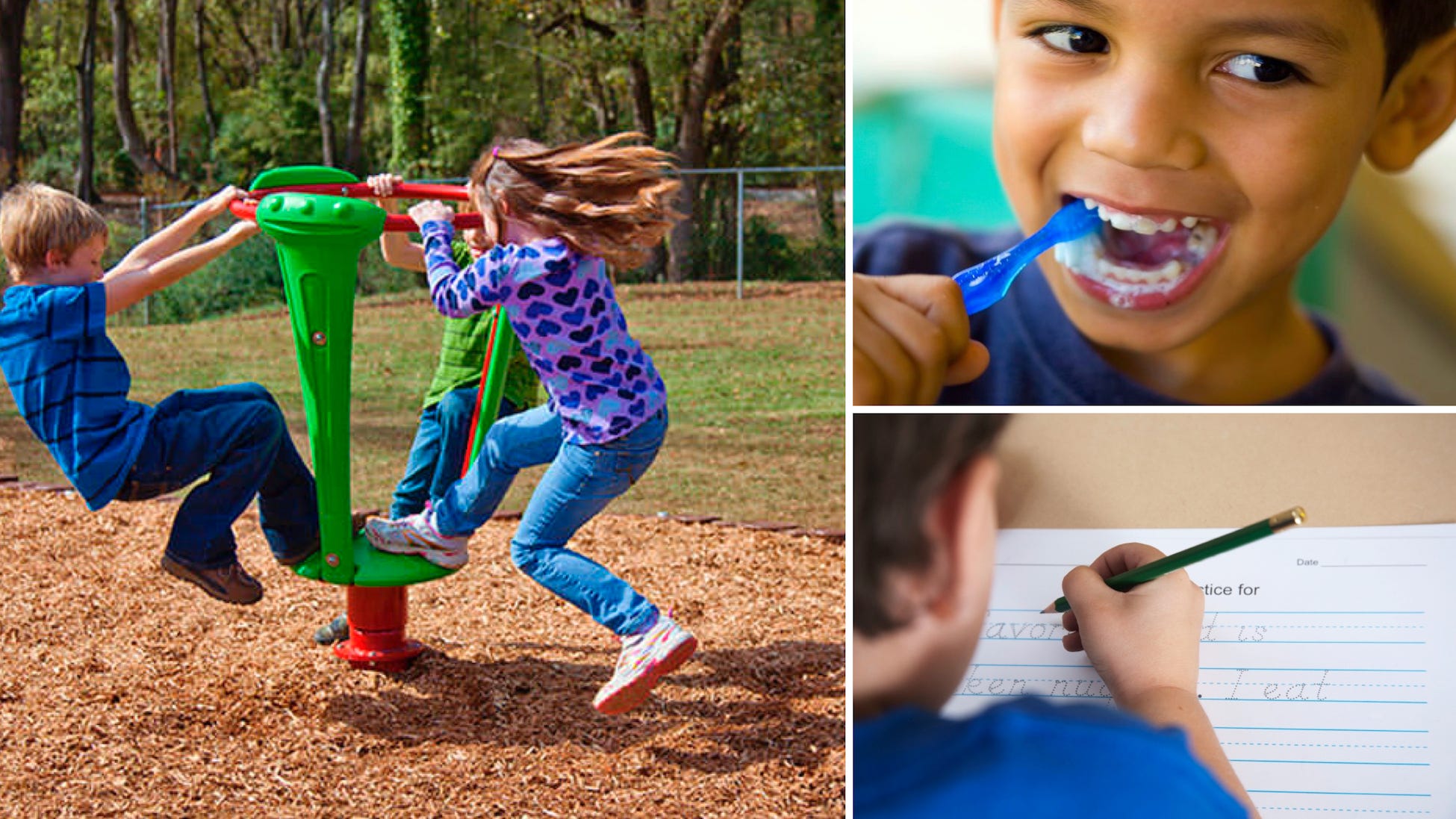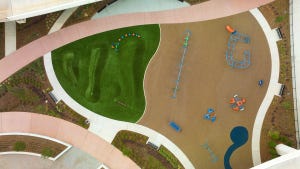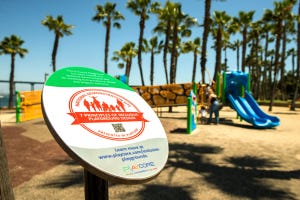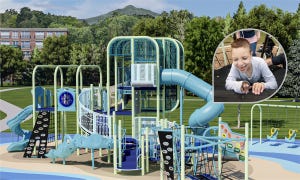Let's Spin!
This is part of a series of posts on the importance of school playgrounds and how to put research into action when designing a play space for students. Request information about PlayOn!, the standards-based curriculum for active school playgrounds.
Spinning is fun. It makes us dizzy. It makes us laugh. It also does a lot more. According to SHAPE America, a leading organization on physical education for children (they literally wrote a book on how to make fitness fun), spinning play provides two distinct developmental benefits that are essential for school playgrounds:
- Develops kinesthetic awareness and postural control
- Improves understanding of speed, force, and directional qualities of movement
Let’s take those one at a time:
Kinesthetic Awareness
This sounds a bit complicated and, frankly, made up. But it’s a real thing. The kinesthetic sense is sometimes called "muscle memory," and is the awareness of our own movement, for example when we walk, eat, write, or brush our teeth. The kinesthetic sense is based on proprioception, which is awareness of the position of our body in three-dimensional space. Studies suggest spinning play enhances a child's sense of balance, hand-eye coordination and cognitive development.
Who knew spinning was so scientific?
Postural control describes the way our central nervous system talks with our body's other internal systems to produce proper muscle activity to maintain a controlled, upright posture. In other words, when you spin around, your brain has to tell your body how to stand up straight when the spinning stops.
Spinning play on the school playground helps children develop important life and learning skills like teeth brushing and handwriting.
What about that second one: Improves understanding of speed, force, and directional qualities of movement
This is starting to sound a lot like physics class but hang in there with me. When children, or adults, spin in a circle or on a piece of playground equipment they experience different physical forces such as the speed they are traveling and the centrifugal force that is exerted upon them as they are pushed away from the center of the object. They also experience how changing directions (spinning clockwise versus counterclockwise or how leaning forward versus backward) affects the motion and speed of the play activity, as well as the sensation of the experience. That's a lot more than just getting dizzy. :)
You can learn more about spinning play, as well as all six essential physical play elements in PlayOn! - a standards-based curriculum developed by PlayCore with SHAPE America. Interested in designing a playground that incorporates these research-based principles? Contact your local GameTime representative and ask how your playground might be named a National Demonstration Site for Youth Physical Activity!
- Trails (27)
- Schools (179)
- Press Releases (102)
- Playground Funding (3)
- Play Science & Research (62)
- Parks & Recreation (338)
- Outdoor Fitness (137)
- National Demonstration Site (32)
- Landscape Architects (72)
- Inclusive Play (101)
- Daycare and Early Learning (61)
- Custom Play (36)
- College Campus (27)
- Churches (50)
- Challenge Course (30)
- Featured Projects (72)
- Site and Shade (6)






